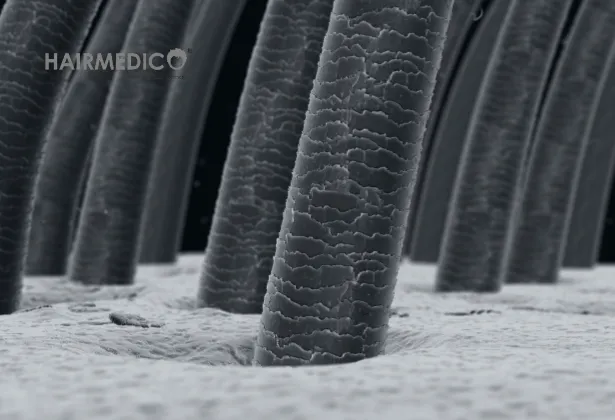
In 2025, the field of hair restoration is undergoing a revolutionary shift. While hair transplantation remains a trusted and effective method for treating baldness, scientific advancements are now opening new avenues for non-surgical hair regrowth. At the core of this transformation is the concept of reactivating dormant hair follicles—tiny structures beneath the skin that are capable of regrowing hair if stimulated properly. This comprehensive guide explores the latest research, technologies, and future possibilities in the realm of follicle reactivation.
Hair growth occurs in a continuous cycle comprising four phases: anagen, catagen, telogen, and exogen. Each phase plays a critical role in the development and shedding of hair.
• Anagen (Growth Phase): Lasts 2–6 years and determines the length of hair.
• Catagen (Transition Phase): A short 2–3 week period where hair growth slows.
• Telogen (Resting Phase): Lasts 2–3 months. Hair is no longer growing.
• Exogen (Shedding Phase): The final stage where old hairs fall out.
A disruption in this cycle, particularly an extended telogen or exogen phase, can lead to visible hair thinning or bald patches. Many individuals with androgenetic alopecia have dormant, but not dead, follicles—offering hope for non-surgical revival.
One of the most important distinctions in hair restoration is understanding the difference between dormant and dead hair follicles. Dormant follicles are inactive but still structurally present within the scalp. They have the potential to re-enter the anagen phase under the right conditions.
Dead follicles, on the other hand, are typically associated with scarring alopecia or long-term inactivity. These follicles have undergone fibrosis or structural degeneration, making regeneration highly unlikely.
Stem cell-based approaches are among the most promising developments in hair follicle reactivation. By using adipose-derived or follicle-derived stem cells, researchers aim to stimulate the scalp’s natural regenerative processes. Clinical trials in Japan, South Korea, and the United States are demonstrating the potential of stem cell injections to prolong the anagen phase and thicken existing hair.
Exosomes are nano-sized vesicles that facilitate cell communication and healing. In 2025, exosome therapy has become a trending topic in regenerative medicine. Applied via scalp injections, exosomes deliver growth factors directly to hair follicles, potentially reversing miniaturization and promoting healthy regrowth.
This signaling pathway plays a pivotal role in activating follicle stem cells. New topical formulations and injections that stimulate the Wnt/β-catenin pathway are being tested in clinical environments. While still experimental, early data suggest improved follicle density and faster hair cycling.
PRP therapy has evolved significantly. By concentrating platelets and combining them with microneedling, growth factors can reach deeper layers of the scalp. PRP 2.0 and PRF (platelet-rich fibrin) therapies offer a more sustained release of growth factors, providing longer-lasting results.
CRISPR and Genetic Engineering
CRISPR technology is being explored to edit genes associated with hair loss. Although not yet clinically available, this method could one day prevent follicle miniaturization at the genetic level—especially for those with strong family histories of baldness.
Comparing Hair Transplants and Non-Surgical Regrowth Options
While hair transplants remain effective for those with extensive hair loss, non-surgical therapies are gaining traction for patients with thinning or dormant follicles. The key differences include:
• Transplants offer immediate, permanent coverage.
• Non-surgical options are gradual and may require maintenance.
• Biological treatments are ideal for early-stage hair loss.
• Combining both methods often yields the best outcomes.
At Hairmedico, innovation meets expertise. Our proprietary Algorithmic FUE™ technique not only extracts grafts with high precision but also incorporates AI-assisted planning based on follicular density and scalp health. Looking ahead, we aim to integrate regenerative medicine—including PRP, stem cells, and exosomes—into our post-operative care plans for optimized results.
Q: Can I regrow hair without a transplant in 2025?
A: Yes, if your follicles are dormant—not dead—you may benefit from regenerative therapies.
Q: Are stem cell and exosome therapies safe?
A: Clinical trials show promising safety profiles, but long-term studies are ongoing.
Q: What is the most effective non-surgical method?
A: PRP combined with microneedling and stem cells currently offers strong results.
Q: Will these treatments work for women?
A: Yes. Many female patients respond well to non-surgical follicle activation methods.
2025 marks a turning point in the treatment of hair loss. With ongoing research, technological innovations, and personalized protocols, patients have more options than ever before. At Hairmedico, we are committed to leading this change—blending traditional surgical precision with the latest in biological reactivation.